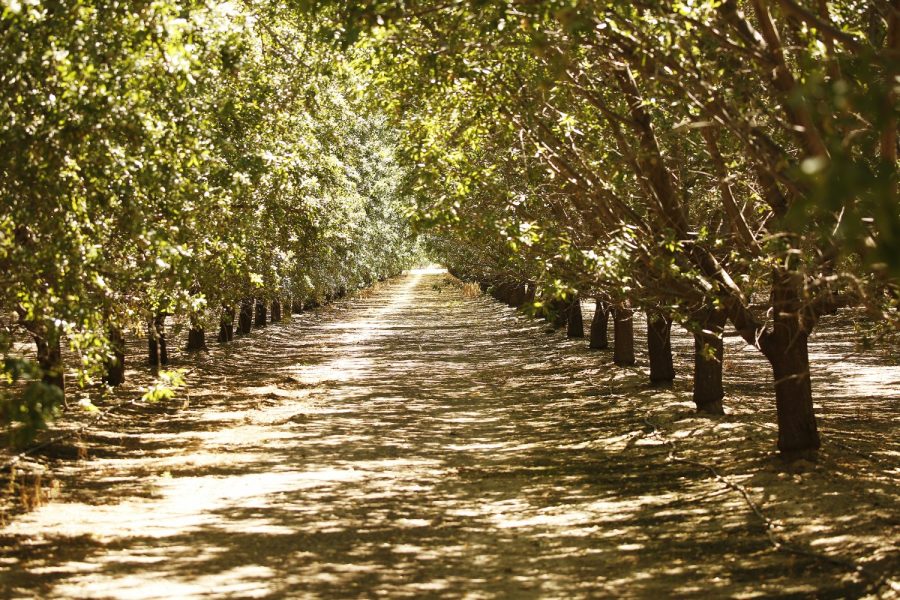Drought — it’s as Californian as Hollywood, surfing, and avocados.
Since the beginning of the 21st century, this state has been in a long continuous drought with barely any respite. The western part of the United States is no stranger to arid conditions, so for many years, most Californians and state officials chose to treat the drought as a temporary inconvenience that would eventually go away – they were wrong.
While in drought, residents are expected to bear the responsibility of cutting down on their water use; it is a minimal, and temporary measure to deal with a temporary problem. However, the dynamic changed in 2014, when then-Gov. Jerry Brown urged citizens to “make conservation a California way of life.” This was a tacit acknowledgment that the drought was not, in fact, temporary, but the plan remained the same as it was before.
With all this focus on individual conservation, one could be mistaken for believing that individuals use up a majority of this state’s water, and that cutting back on individual water use is the most efficient way to conserve it. However, this is simply not the case.
Only about 13% of the water use in California is residential and another 7% is split between government and industrial use. The remaining 80% of water is consumed by agriculture; of that, about a quarter is eaten up by a single crop: almonds.
California is the almond capital of the world, with 82% of the world’s almonds being produced in this state. Two-thirds of that is in just five counties: Kern, Fresno, Stanislaus, Merced, and Madera. All of them just so happen to be located in the most severely affected area by the drought. Of all edible crops, almonds are by far the thirstiest. It takes about 8 gallons to produce a pound of strawberries, around 10 for a pound of tomatoes, and nearly 42 for a pound of oranges. To produce a pound of almonds, it takes about 400 gallons of water. Yet, in the past two decades, while drought has wracked California, almond production has doubled.
Almond farming employs approximately 21,000 people and accounts for just 0.25% of California’s economy; but according to the California Department of Water Resources, it uses up 19.2% of all the water in the state — an uneven trade, if ever there was one.
In the past few years, the notion of the “carbon footprint” has been criticized by many, from the New York Times to The Guardian, as a way for corporations to offload their responsibility for climate change onto individuals. California’s obsession with individual water conservation is another branch of the same tree. Agriculture accounts for 80% of California’s water use, but only 2% of the state’s economy, and employs 400,000 of the state’s 19 million employed citizens. In spite of this, agriculture gets its water subsidized by the government. Meanwhile, the 18 million other employed Californians, plus 20 million not in the workforce, are encouraged and occasionally forced to cut back on their use of the remaining 20% of water. Untold time and resources are thrown into getting individuals to reduce their water consumption, while almond production alone uses up about as much water as all residences and businesses in the entire state.
The idea behind conservation is that individuals can temporarily cut back in an emergency, and will be able to return to normal when the crisis has abated. They cannot, and they will not.
Of course, individuals have a responsibility in such a situation. Just because individual conservation won’t end the water crisis, it doesn’t mean deliberate wastefulness should be encouraged or practiced. Some cutbacks are reasonable, but the fact is that no amount of individual conservation will ever truly solve this.
Everyone has their part to play, and with a few exceptions, California’s residents are playing theirs, but the agricultural sector that uses the vast majority of this state’s water is not.
So, how can this begin to be solved? The first, simplest, cheapest, and most immediate measure would be to strictly limit the amount of water able to be used in the growing of almonds. Doing this would practically end the water crisis altogether, with an insignificant cost to California’s economy and employment. Almonds can make for a delicious snack, but they are in no way essential to feeding this country or any other. There are other places in the world that can grow them, and almond growers can be directed into different jobs or transition into growing less water-intensive crops.
Every human being needs water to live, and every Californian has a role in maintaining it. As it stands, the burden of action is being placed entirely upon those least capable of shouldering it, and though they take on it anyway, it just isn’t enough, and it never will be. To address a long-term problem, a long-term solution is needed.


